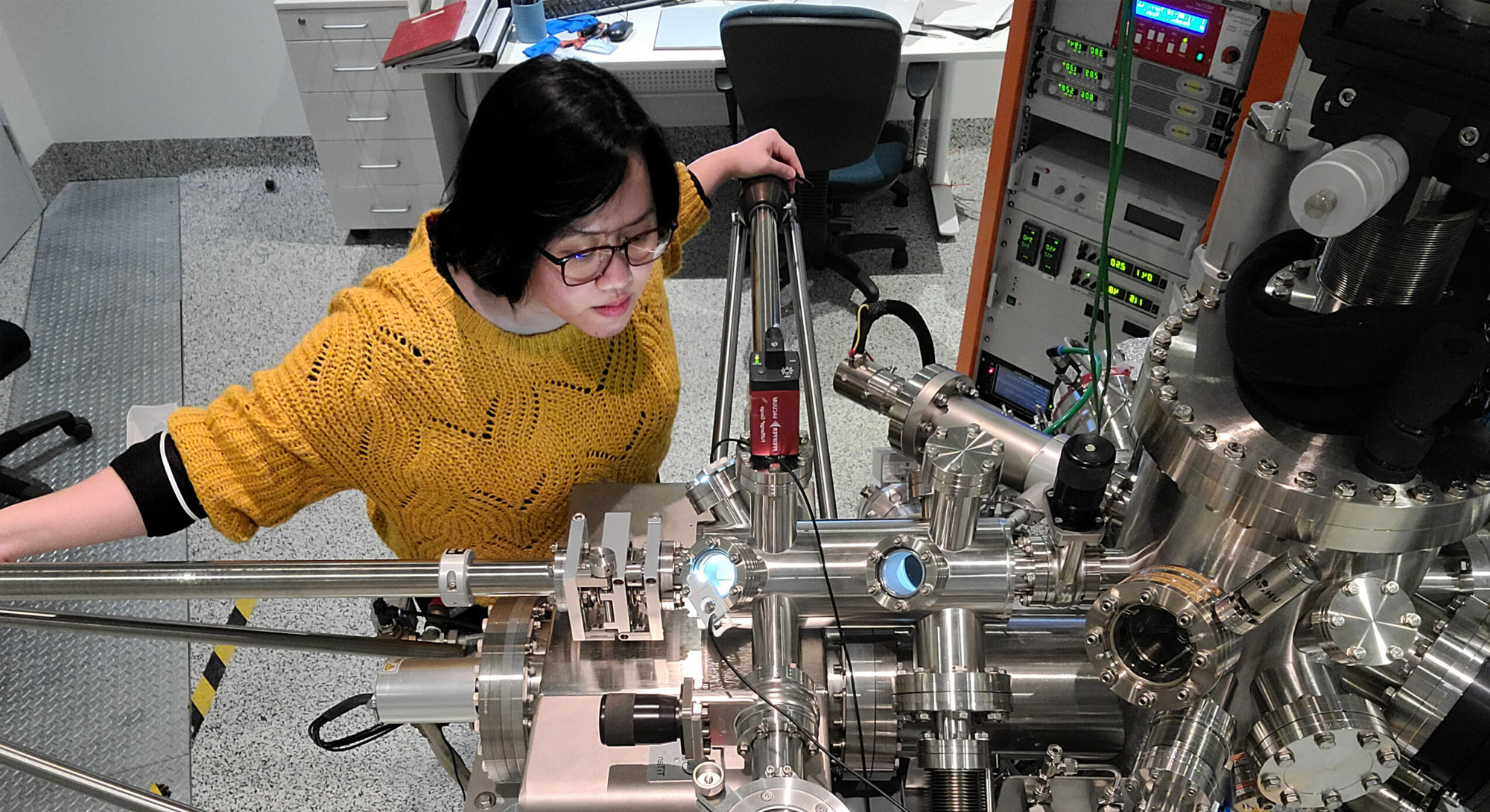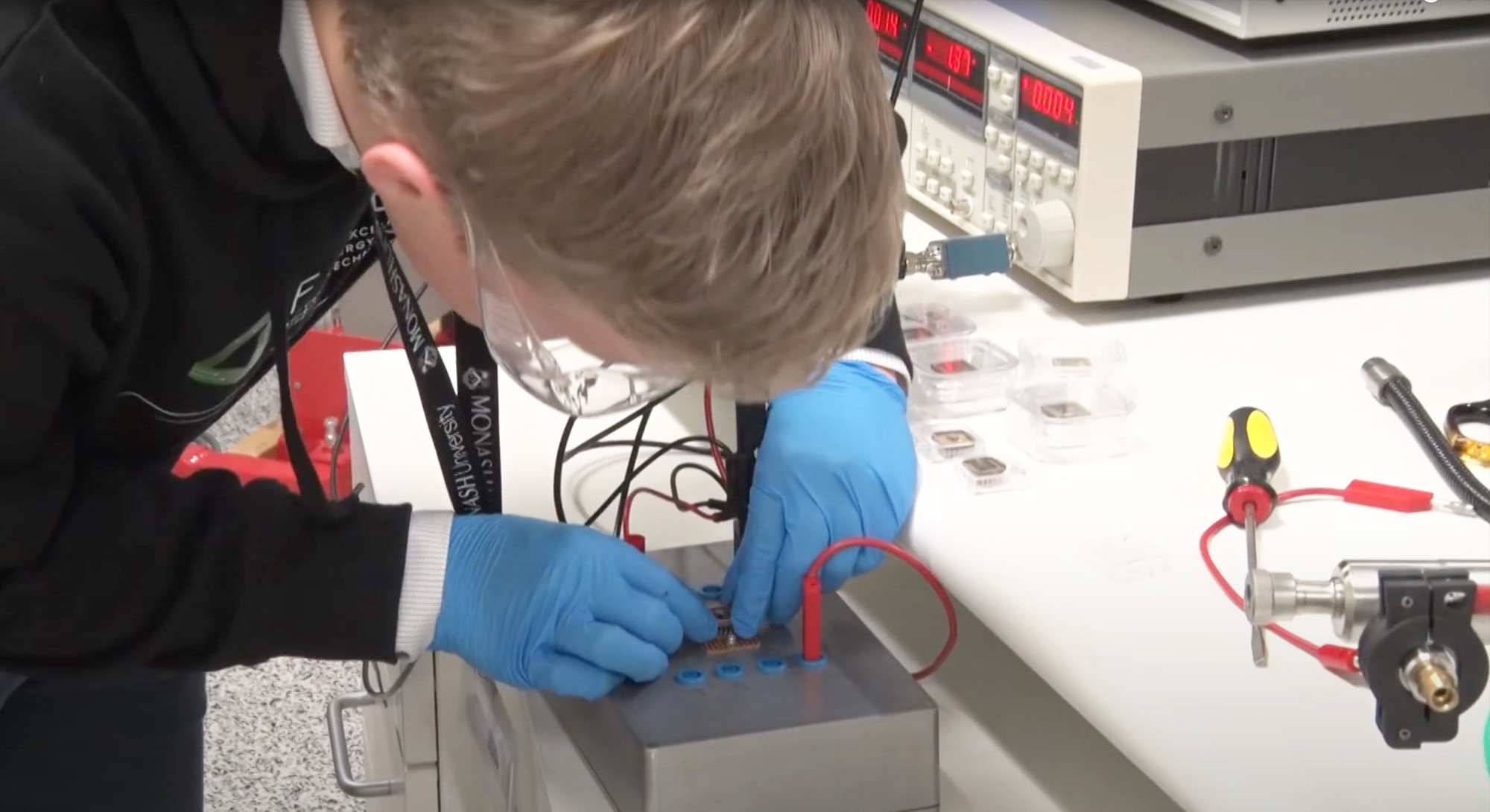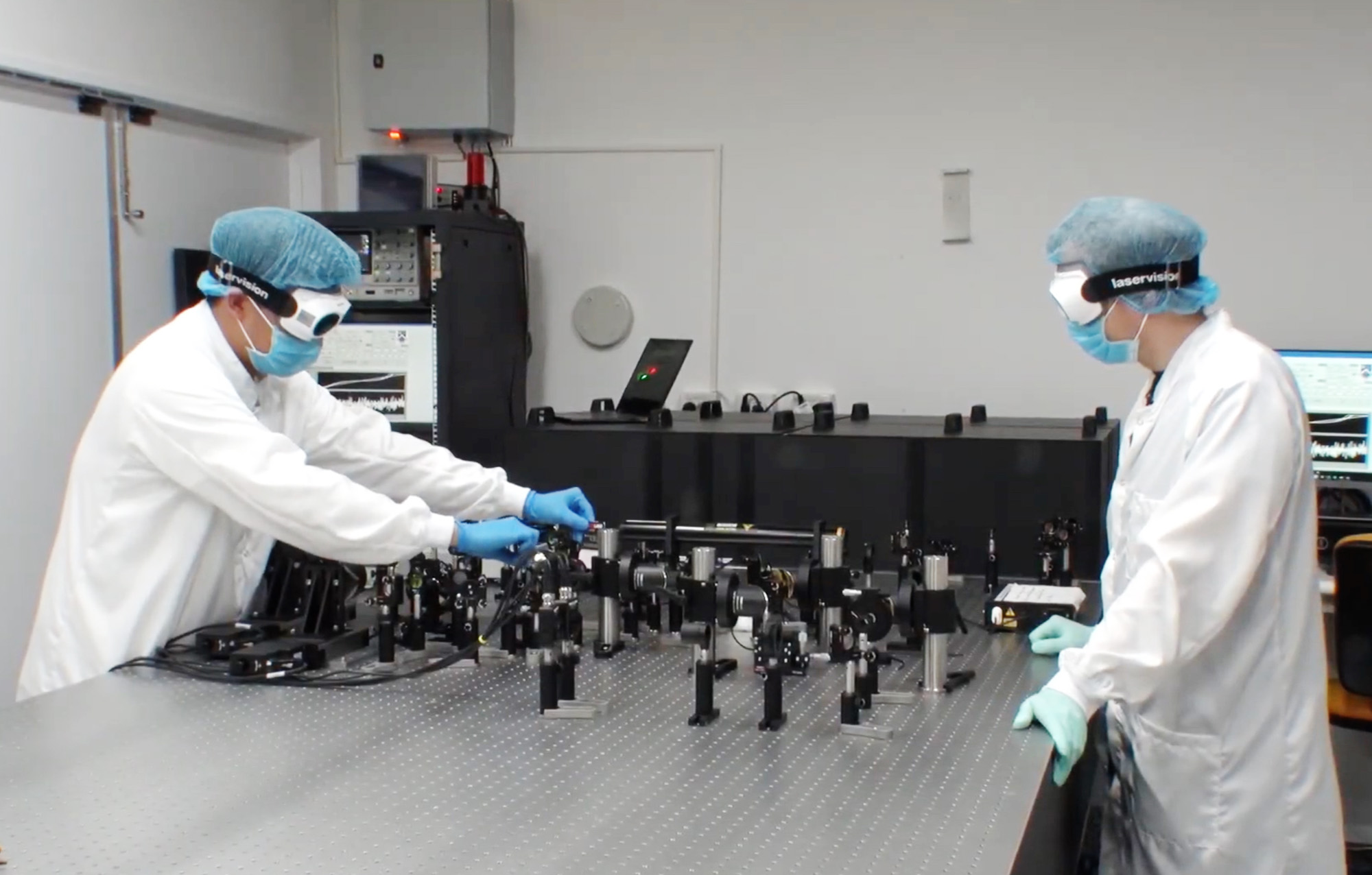Message from the Director
2021 was a year to take stock of our activities, refocus our efforts, and fine-tune our strategies to ensure FLEET has maximum impact through the life of the Centre and beyond.
As examples of high-impact strategic efforts in 2021, FLEET launched a major new initiative to boost translation of FLEET research, and expanded its groundbreaking Women in FLEET Fellowship program to diverse groups under-represented in STEM.
FLEET continues to adapt its outreach, communications and mentorship programs to maintain leadership through and beyond the pandemic.
FLEET’s research continues to gather momentum. FLEET researchers have:
- Trained their sights on novel magnetic topological materials and electronic control of magnetic devices, with numerous breakthroughs this year
- Presented the Centre’s concept for a negative-capacitance topological transistor at the prestigious IEEE International Electronic Devices Meeting in 2021, with benchmarking indicating it can reduce energy by an order of magnitude compared to state-of-the-art silicon devices
- Demonstrated the world’s first dissipationless flow of exciton-polaritons at room temperature, and, bringing things full circle, showed that light could be used to engineer new topological phases in exciton-polariton systems.
More information on these and other research highlights follow below.
New strategic activities
As a result of feedback from FLEET’s mid-term review, FLEET has launched two major new strategic initiatives in 2021.
FLEET has devoted half a million dollars to a new Translation Program that will let HDR students, postdocs and investigators pursue translational impacts of their FLEET research. FLEET has engaged an expert translation coordinator to oversee the program, working with FLEET members to help identify new projects and shepherding them through the process of working with universities and industry. As part of this program, FLEET will also be offering new training workshops focused on giving FLEET members the skills they need to make an impact with their research (see FLEET Translation Program).
FLEET is also expanding the Women in FLEET Fellowship program to diverse groups under-represented in science, including (but not limited to) Aboriginal and Torres Strait Islander Australians; gay, lesbian and gender nonconforming persons; people with disabilities; and those with disadvantages due to background, refugee or socioeconomic status. FLEET has started recruiting and will offer four such fellowships in 2022 (see Diversity in FLEET Fellowships).
Online innovations
The pandemic continues to pose challenges, and FLEET has had to rethink many traditional face-to-face activities and innovate new virtual solutions. FLEET adopted a new online mentorship tracking application, Mentorloop, in 2021, which aids in establishing and enhancing mentor–mentee relationships and provides training and feedback to enable better mentorship.
FLEET’s online communications continue to exceed KPIs, and FLEET has again increased its KPIs for mentions of FLEET research in the media and unique hits to Centre website.
FLEET has maintained its high outreach impact, despite the pandemic’s challenges to public outreach activities, by creating new, in-depth teacher resources, building on our popular home science videos for younger children and creating a new a new ‘Ask the physicists’ Facebook page.

Research highlights
The development of new quantum materials with new properties (Research Theme A) underpins FLEET’s research. In 2021, we made significant progress in developing magnetic topological materials in which magnetic order can stabilise new topological phases, such as the quantum anomalous Hall effect, which are much more robust to disorder. FLEET researchers at the University of Wollongong (UOW), Monash and RMIT used two different magnet dopants, samarium and iron, to modify the topological insulator Bi2Se3, creating an ideal combination of robust ferromagnetism, a large bulk bandgap and large magnetism-induced surface bandgap (44 meV, much greater than room temperature), and very high charge carrier mobility. A theory/experiment team at Monash worked with the Advanced Light Source at Lawrence Berkeley National Lab (USA) to directly observe the large magnetism-induced bandgap in MnBi2Te4 two-dimensional (2D) films that exhibit the quantum anomalous Hall effect. They demonstrated that monolayer MnBi2Te4 is a wide bandgap 2D ferromagnetic insulator (of which only a few examples were previously known).
FLEET researchers at Wollongong and ANSTO won an ARC Linkage award to study the applications of topological materials in thermoelectricity, which is a promising means to scavenge waste heat from industrial processes and turn it into useful electricity.
New techniques to modify materials to create useful devices (Research Theme B) are also critical for FLEET’s mission. FLEET researchers have pioneered the technique of using a voltage signal to electrochemically alter the properties of a working device. In 2021, FLEET demonstrated that this electrochemical gating effect could be used to enhance magnetic interactions in the 2D van der Waals material TaS2 by inserting protons into the material. A similar technique was used to insert protons into the near-room-temperature 2D van der Waals ferromagnet Fe5GeTe2, producing the highest carrier densities achieved in that material and revealing a new electrochemically- controlled ferromagnetic-to-antiferromagnetic phase transition.
Liquid metals have emerged from FLEET research as a surprisingly powerful research platform with an extraordinary range of applications. FLEET researchers have used the surface of liquid metals to fabricate new atomically-thin materials that are now finding use in projects across FLEET. In 2021, FLEET researchers found that liquid metals could be used to create voltage-controlled devices, such as pumps with no moving parts, and demonstrated miniature chemical reactors driven by liquid metal pumps. FLEET’s liquid-metals research led to the launch of a spin-off company Liquid Metals Plus in 2021 by Kourosh Kalantar-zadeh (UNSW) and Torben Daeneke (RMIT). The company is exploring application of liquid metals in materials synthesis and carbon capture and storage.
Research theme 1

FLEET’s Research Theme 1 is developing the concept of a topological transistor for low-energy electronics. In 2021 a UOW-Monash-UNSW team demonstrated that a particular topological transistor concept called the topological quantum field-effect transistor (TQFET) can beat ‘Boltzmann’s tyranny’ and switch at voltages lower than the limit set by room-temperature thermodynamics in a conventional transistor. The concept has been developed further by FLEET researchers at Monash, RMIT, UOW and UNSW who have proposed that the TQFET can be integrated with ferroelectric materials with effective negative capacitance to create a negative-capacitance TQFET (NC-TQFET). The team benchmarked the NC-TQFET theoretically against conventional silicon devices, demonstrating that it could use eight times less energy than a similar-sized silicon counterpart.
FLEET Theme 1 researchers continue to improve understanding of novel 2D topological materials. In 2021, FLEET researchers at RMIT and UNSW measured the magnetic quantisation axis and directly demonstrated topological spin-momentum locking in the edge states of 2D topological insulator WTe2, a critical property for dissipationless transport of current along the edges of a 2D topological insulator.
Topological insulator electronics devices now feature as a promising ‘beyond CMOS’ technology in the 2020 IEEE International Roadmap for Devices and Systems, and in 2021 FLEET contributed updated information for the 2022 edition of this important industry roadmap.
Research theme 2

FLEET’s Research Theme 2 aims to use dissipationless flow in exciton or exciton-polariton superfluids for low-energy devices. FLEET’s team are now world leaders in the race to exploit dissipationless phenomena in 2D van der Waals semiconductors for room-temperature applications. In 2021, the team was the first in the world to demonstrate room-temperature dissipationless transport of exciton-polaritons in monolayer semiconductor WS2. The team is also exploiting the unique properties of the half-light half-matter exciton-polaritons to create new kinds of topological states. Spatial patterning of light creates patterns that change not only the energy of the exciton-polaritons, but also their rate of creation and annihilation, allowing new ‘non-Hermitian’ topological states, which are difficult to achieve in other systems.
Theme 2 researchers have also directly visualised the existence of biexcitons (bound pairs of excitons) in monolayer semiconductors using coherent ultra-fast spectroscopy. The Theme 2 theory team continues to make advances in understanding interacting polariton systems, including how polaritons interact with each other and with free charge carriers, and how quantum correlations arise in confined polaritons.
Research theme 3

FLEET’s Research Theme 3 aims to use light to control superfluidity and topology, creating new paradigms for low-energy devices. In 2021, Theme 3 researchers at Swinburne University of Technology observed the dynamics of an ultra-cold atomic cloud that has suddenly been switched from a normal gas to a dissipationless superfluid state. Theme 3 researchers developed a comprehensive theory of vortex dynamics and pinning in superfluid flows. In related work, FLEET researchers have also observed for the first time the fluid-like flow of (non-superfluid) electrons in channels of a conventional semiconductor with very low disorder.
In the process of using ultra-fast light to modify the properties of 2D semiconductors, Theme 3 researchers at Swinburne and Monash found that they could use machine learning to disentangle the complex information in the optical spectra of 2D materials, allowing them to better understand how doping, strain and disorder in solid state materials affect their optical properties.
FLEET’s strategic priorities
- Enable discoveries at the scientific frontier
- Develop next generation of science leaders
- Establish synergistic partnerships
- Foster equity and diversity in STEM
- Promote public STEM literacy
- Facilitate communication
Centre priorities in 2022
- Communicate FLEET’s legacy internally and externally
- Implement the Centre’s new translation and sustainability plans (see strategic plan)
- Launch the FLEET Translation Program
- Focus on industry mentoring and internship programs
I think there is a genuine interest in collaboration among members at different nodes. Folks are always willing to have a chat about your data, how to analyse it, help measure samples, grow samples etc. It's not just because it's a KPI that people work together; I think they actually want to.
FLEET member survey